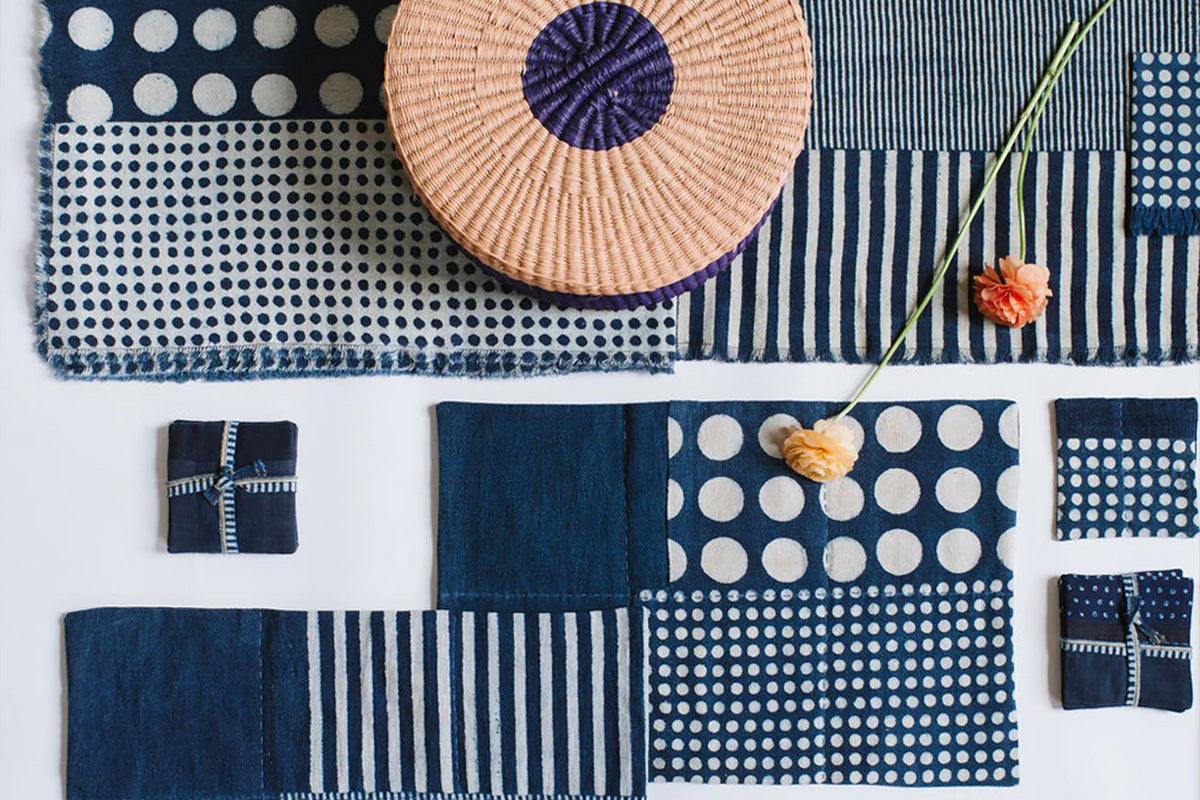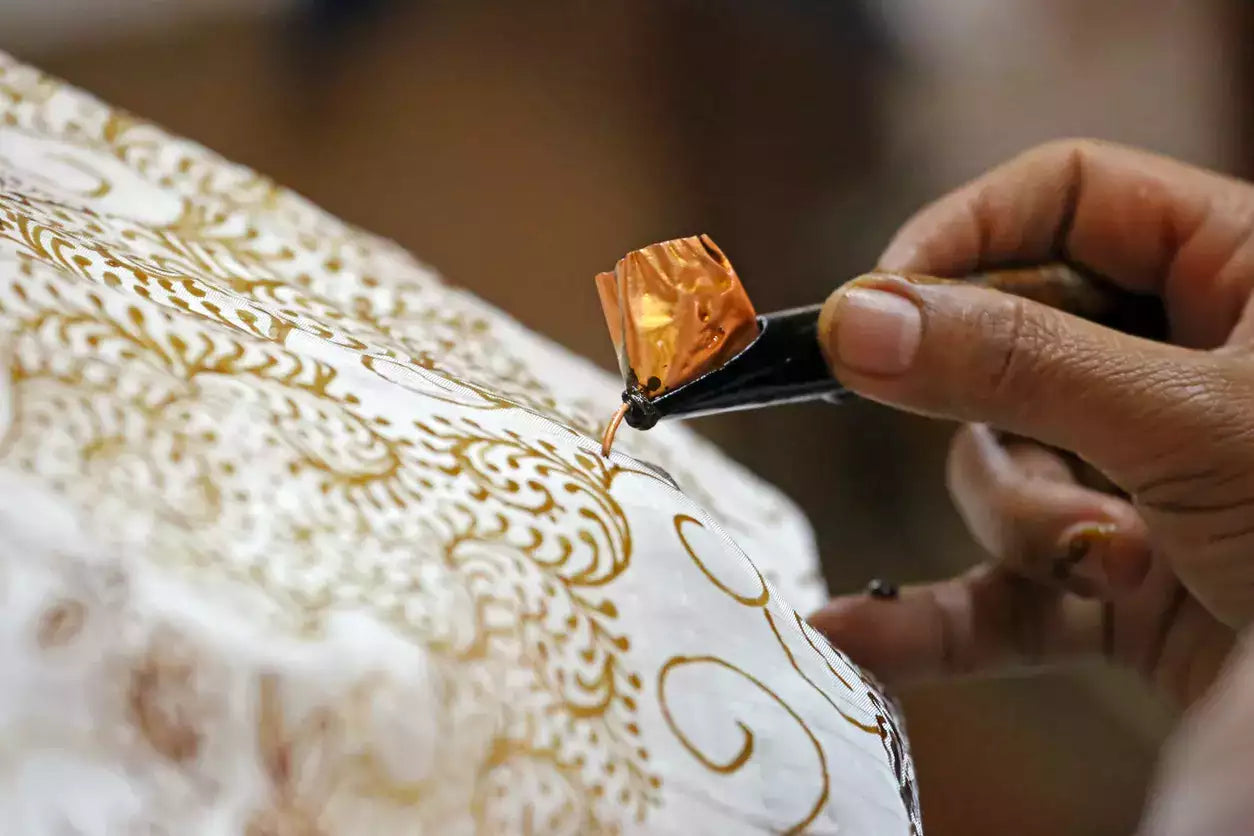Article: Ajrak Fabric

Ajrak Fabric
Ajrak is a craft that dates back to 2500 BC- 1500 BC originating from Indus valley, typically the Sindh area. Ajrak, also known as “Ajrakh” basically means blue in Arabic, which is the primary color used in Ajrak printing. It is a craft that intricates symmetrical block prints with even-spaced white motifs on a cloth dyed in majorly two colors - indigo blue and a dark shade of crimson red.
The Sindhi migrants to Kutch who mastered the craft were forced to relocate after the 2001 Gujrat earthquake. They put down roots in Ajrakpur with some relief NGOs, making Ajrakpur along with Kutch, Khavda, Dhamadka, and Barmer the major spots for production of this craft.
How is Ajrak practiced?
The craft of Ajrak is one that requires specialized skill, patience, and the knowledge to work in coherence with nature to achieve the right product. In around 14-16 stages spanning over a time period of 14-21 days, the cloth is resist-dyed with natural dyes like Indigo and Madder.
Foremost, a fine quality cloth is stretched and tacked onto a table. A block is then covered with resist and wafted in a manner to make symmetrical impressions over the cloth. Then with a forceful whack, the blocks are smacked on the cloth. The same procedure is repeated to cover the cloth with the block outlines in three different resist types. This cloth is then dyed in the base color of choice and sun-dried to rinse again and dye until it becomes a fresco of motifs and colors.
After a distinctive oil treatment, the cloth is washed again and dyed using natural dyes and alizarine to give the red color in the areas that were originally covered in resist. In the second round of dyeing, the indigo color is given using dyes from natural elements. The final wash is given using soda ash, detergent, and flowing water (in rivers) to give a lustrous and jubilant handiwork.
The craft of Ajrak might be ancient but its usance extends to recognized fashion houses and celebrity wardrobes in the present date. The prints created using Ajrak are ornamental but fresh and breezy as spring. Beautiful motifs of floral, animals like peacock and elephants, and geometrical designs are used in Ajrak. Laces, patches, or cut-outs of Ajrak are used to create a statement wear piece. We, Dorrcee, are the fastest-growing sustainable brand in Rajasthan, and you can check out our Ajrak collection, here, and to explore our collections of other textile art forms, visit here.
How to take care?
Ajrak is usually carried out on fine quality fabrics such as 100% cotton, high-value silk, etc. While maintaining its luster and shine is not difficult, it requires a little care. Ensuring a separate hand wash with mild detergent will keep the cloth and print in synergy. For silk yarns, you may opt for dry-cleaning.

Leave a comment
This site is protected by hCaptcha and the hCaptcha Privacy Policy and Terms of Service apply.